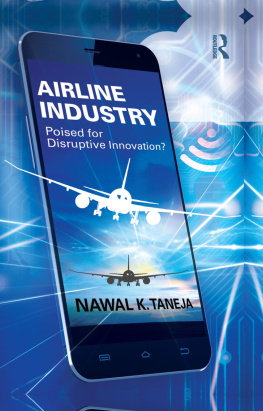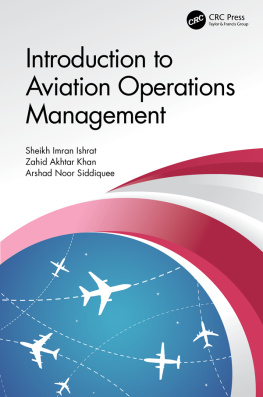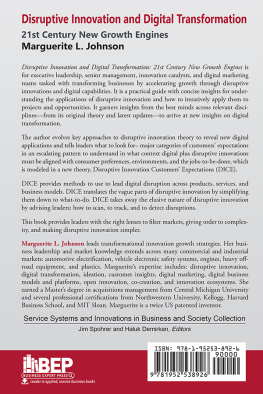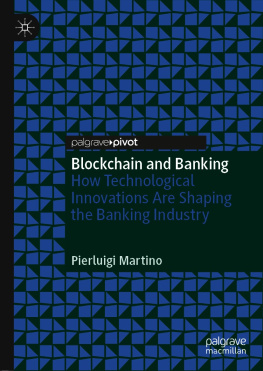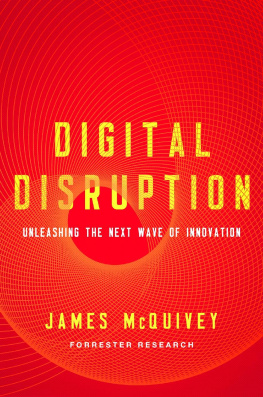
AIRLINE INDUSTRY
Many business sectors have been, and are being, forced to compete with new competitors disrupters of some sort who have found new ways to create and deliver new value for customers, often through the use of technology that is coupled with a new underlying production or business model, and/or a broad array of partners, including, in some cases, customers themselves. Think about the disruption created by Apple by the introduction of the iPod and iTunes, and by Netflix within the entertainment sector using partners within the ecosystem; think of Uber that didnt build an app around the taxi business but rather built a mobility business around the app to improve customer experience.
Airline Industry considers whether the airline industry is poised for disruptive innovations from inside or outside of the industry. Although airlines have a long history of continuous improvements and innovation, few of their innovations can be classified as disruptive. The few disruptive innovations that did emerge were facilitated, for example by new technology (jet aircraft) and government policy (deregulation). Now there are new forces in play customers who expect to receive products that are more personalized and experience-based throughout the entire journey, new customer interfaces (via social media), advanced information systems and analytics, financially powerful airlines based in emerging nations, and the rise of unencumbered entrepreneurs who think differently, as well as platform-focused integrators.
Nawal K. Taneja has over 45 years of experience in the airline industry sector, having worked for and advised major airlines and related businesses worldwide. His experience also includes the presidency of a small airline that provided schedule and charter service with jet aircraft and the presidency of a research organization that provided consulting services to the air transportation community throughout the world.
AIRLINE INDUSTRY
Poised for Disruptive Innovation?
Nawal K. Taneja

First published 2017
by Routledge
2 Park Square, Milton Park, Abingdon, Oxon OX14 4RN
and by Routledge
711 Third Avenue, New York, NY 10017
Routledge is an imprint of the Taylor & Francis Group, an informa business
2017 Nawal K. Taneja
The right of Nawal K. Taneja to be identified as author of this work has been asserted by him in accordance with sections 77 and 78 of the Copyright, Designs and Patents Act 1988.
All rights reserved. No part of this book may be reprinted or reproduced or utilized in any form or by any electronic, mechanical, or other means, now known or hereafter invented, including photocopying and recording, or in any information storage or retrieval system, without permission in writing from the publishers.
Trademark notice: Product or corporate names may be trademarks or registered trademarks, and are used only for identification and explanation without intent to infringe.
British Library Cataloguing in Publication Data
A catalogue record for this book is available from the British Library
Library of Congress Cataloging in Publication Data
Names: Taneja, Nawal K., author.
Title: Airline industry : poised for disruptive innovation? / Nawal K. Taneja.
Description: Abingdon, Oxon ; New York, NY : Routledge, 2016.
Identifiers: LCCN 2016007982| ISBN 9781472484017 (hardback) | ISBN 9781315566429 (ebook)
Subjects: LCSH: Airlines. | Disruptive technologies.
Classification: LCC HE9776.T3577 2016 | DDC 338.7068/4dc23
LC record available at http://lccn.loc.gov/2016007982
ISBN: 978-1-4724-8401-7 (hbk)
ISBN: 978-1-315-56642-9 (ebk)
Typeset in Bembo
by Wearset Ltd, Boldon, Tyne and Wear
Dedicated to Angela, Matthew, and Sophia.
CONTENTS
ROB BROERE
NICO BUCHHOLZ
JOHN GRANT
PEETER KIVESTU
DIRK-JAN KOOPS AND ROBERT ENGELEN
ERIC LEOPOLD
LEO MONDALE
BARRY PARSONS
ROBERT L. SOLOMON
DAN WACKSMAN
GUO XIANQIN
Disruptive innovation, the creation and delivery of new value to customers, is not a new concept within the global airline industry. In the past it was facilitated, for example, when game-changing aircraft entered the marketplace and when governments changed their policies, enabling low-cost carriers (LCCs) to enter the marketplace. It could happen again, claims Nawal Taneja, given the shift in power from businesses to customers enabled by a much broader array of technologies (both relating to the aircraft and consumers), new distributors, changes in regulations, and dramatically changing behavior of customers (for example, the desire for, and the ability to obtain, choice). It could also happen if the new competitive hybrid airlines develop new value propositions, not to mention external businesses developing compelling value propositions for products and services in the space between airlines and their customers.
The author, an acknowledged airline business strategist, claims that uncertainty within the airline industry relates only to the timing, intensity and pace of disruptive innovation. While most airline leaders do see the need for disruptive innovation to remain viable, only a few think they have the necessary resources (especially the resources required to create a relevant corporate culture) and the risk tolerance to undertake truly innovative initiatives. Nevertheless, there are a few airline leaders committed to creating and leveraging innovation strategies and using a structured approach to achieve a profitable and sustainable growth in the hyper-competitive market in which customers are in control. At the other end, airlines working with a business-as-usual mindset and culture for incremental changes only, believing that barriers to disruptive innovation are too strong (government regulations, the complexity of the airline business, constraints of legacy systems and the power of the labor force) could be disrupted in the long run, lose profit share, or even be acquired by more adaptive airlines, or simply become irrelevant.
In this book, the author:
interprets the concept of disruptive innovation basically, a sudden and abrupt change, or shock based on the thought leadership of globally acclaimed experts, what C-Suites of different businesses are doing about it, what disruptive innovation means to them and how to get there;
discusses the relevance of disruptive innovation to the global airline industry, and provides an overview of the contemporary disruptive forces and their convergence, as well as a wide range of strategies adopted by airlines and other members in the travel value chain, such as airports and mobility facilitators;
illustrates how adaptive airlines can pursue disruptive innovation or at least implement some forms of dynamic and transformational changes to create and/or deliver new value by re-defining what is possible to meet the needs of a growing number of customers for simplicity, reliability and affordability, as well as the availability of personalized and experience-based services;
recognizes and shows examples of how disruptive innovation has either been facilitated or obstructed by government policies and how committed entrepreneurs have worked with and around the government policies to achieve their goals;
examines how an airline can move away from providing basic transportation from a jet bridge at airport A to one at airport B to become a retailer and provider of customer experience, preempting, in some ways, customers to become owned by other businesses than the airlines;
Next page
